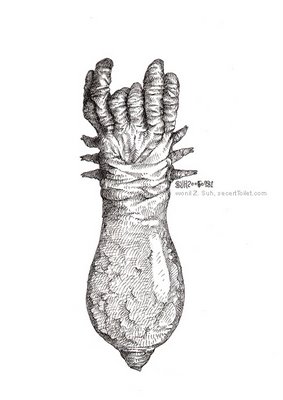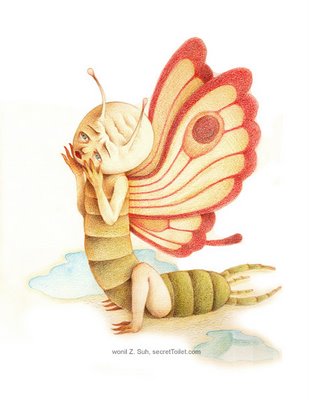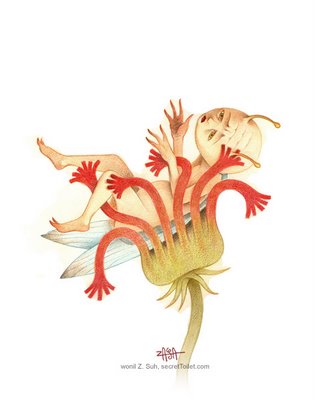Folliculus Sarcoptidae (Pouch Mite)

Calamus Sarcoptidae (Pouch Mite)
Probably the strangest of all mite sub species, Folliculus Sarcoptidae live deep inside pipes and narrow passages in the body of warm blooded animals including humans. Their typical habitats include nostrils, the eustachian pipes, the esophagus (the gullet), and lungs. Using millions of tiny foot hairs to attach - or rather adhere - itself to the host, a calamus sarcoptidae sucks blood from the host. They also have developed an organ similar to gills in both shape and function in order to survive in such environments with dense moisture. The pipe extruding from the tail is the drainage from the gill-like organ. They can cause serious diseases including asthma, various infections and inner-skin diseases.
***
fine point felt pen on paper
***
yet another parasitic/symbiotic mite. this one's truly gross.
Labels: drawing






